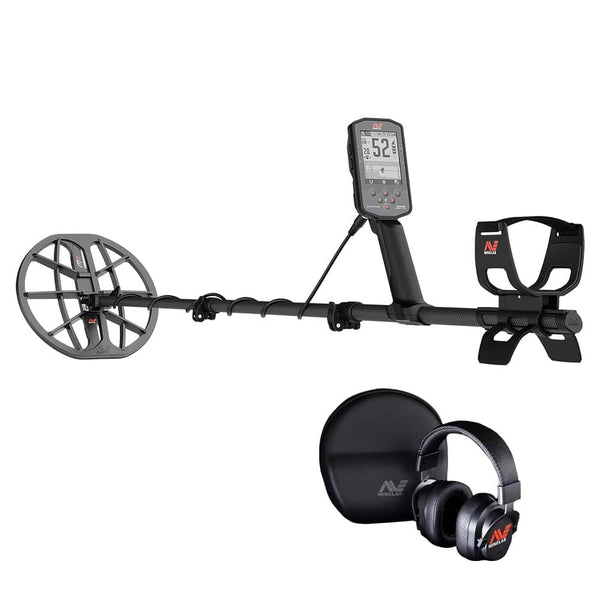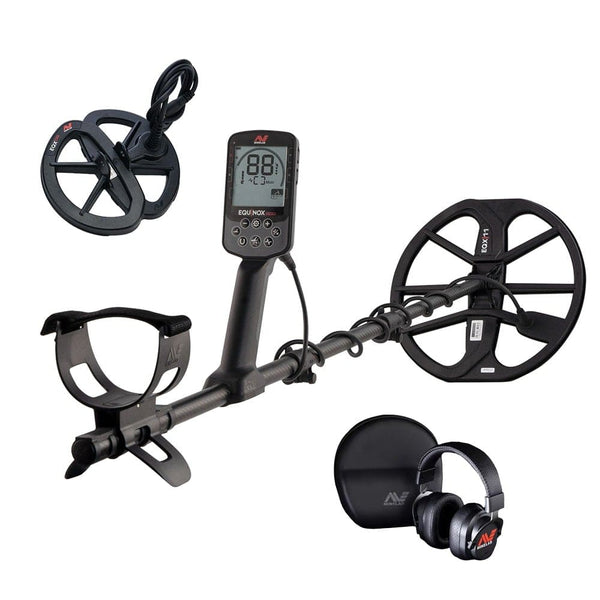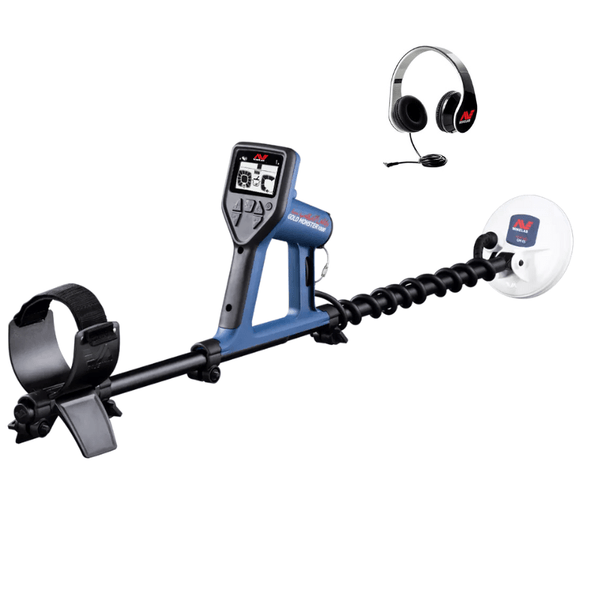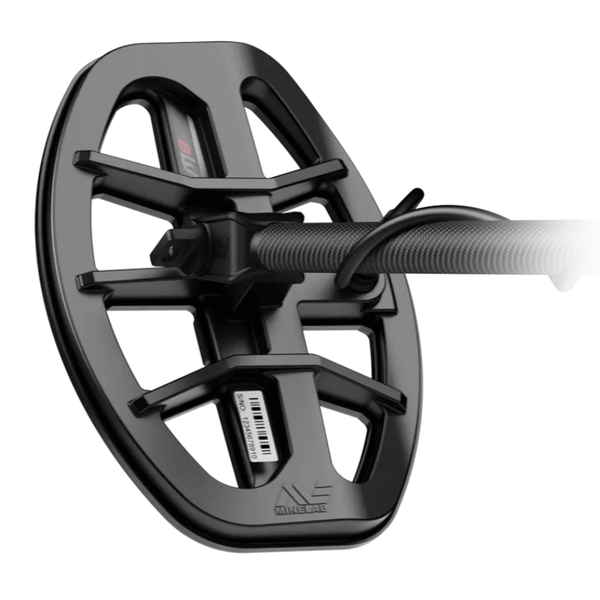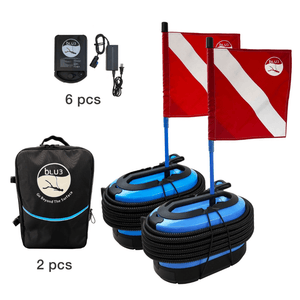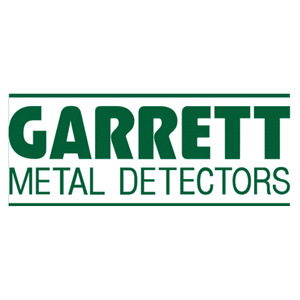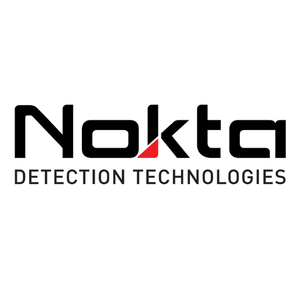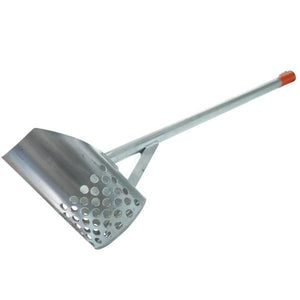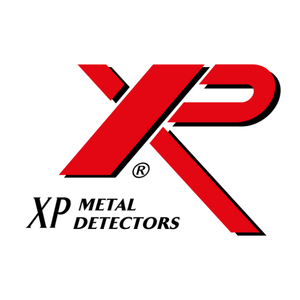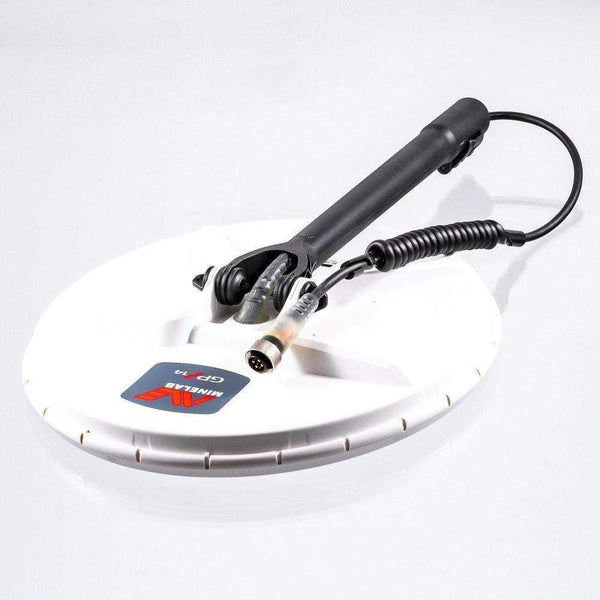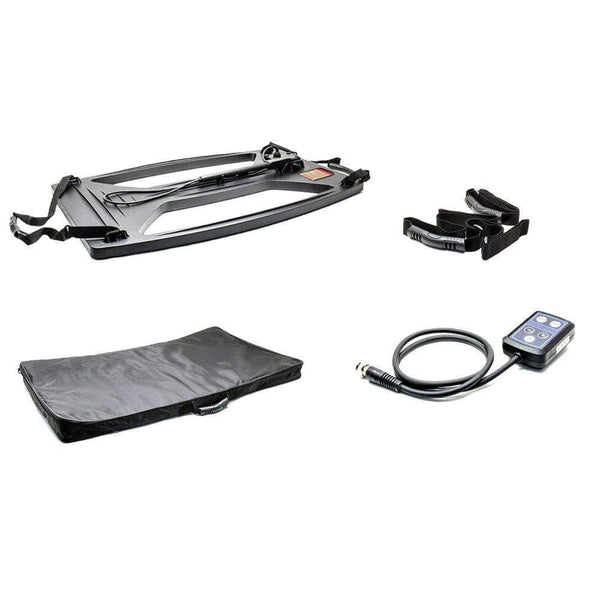The Ultimate Guide to Gold Prospecting
There are many misunderstandings and a lot of guesswork when it comes to gold prospecting. So we have decided to consolidate all the most reliable research from the best Gold experts we know from the World of Gold detecting. These insightful tips have come from decades of compiled knowledge and experience, and of course success with striking gold!
VLF Metal Detectors vs. PI Metal Detectors
VLF (Very Low Frequency) Metal Detectors
A VLF metal detector is a single or multi-frequency device that consists of a constant sine wave. The sine wave(s) reaches down and into the ground

to locate a metallic target. Once it begins, the device charges the target and releases an eddy current which consists of loops of electrical current produced within conductors by an alternating magnetic field in the conductor. This current is then sent back as a signal which tells you that you have found a target!
A common misunderstanding with gold metal detectors is that you cannot get a good amount of depth from a VLF metal detector. This belief is not true, because as long as you have the VLF machine accurately set up and you are using the best detector in the proper conditions with the appropriate coil, you can unquestionably get depth with these machines. Of course, a VLF detector can have an advantage on shallow, smaller targets, on and off of different ground conditions. The trick is to keep it stabilized, ground balanced, and the sensitivity is set correctly, this will improve your chances of finding some of the smallest gold nuggets and jewelry, even some in the grain over gram range.
PI (Pulse Induction) Metal Detectors
The best and simplest description of a PI metal detector is a device that first talks to then listens intently. The PI machine differs from the VLF de tectors as it does not utilize a continuous sine wave. It uses a pulse that alternates swiftly between turning on and off. If you are looking to hunt in highly mineralized soil your best bet would be to use a PI machine as they perform better than VLF. This is due to their ability to measure the speed of the signal decay of the target and the surrounding ground around it.
tectors as it does not utilize a continuous sine wave. It uses a pulse that alternates swiftly between turning on and off. If you are looking to hunt in highly mineralized soil your best bet would be to use a PI machine as they perform better than VLF. This is due to their ability to measure the speed of the signal decay of the target and the surrounding ground around it.
Nonetheless, there are areas like low mineralization deposit areas where a PI machine will just not work to its whole potential and in these areas, you are better off with a VLF device. For instance, if you have unreasonable cold or hot rocks and or strange salts, there have been occasions when a VLF metal detector has been beaten by a PI machine at finding targets.
How Do Frequencies Work in VLF Metal Detectors?
VLF Metal Detectors work with a range of high and low frequencies. Higher frequencies will allow you to find smaller targets closer to the surface and Lower ones will allow you to search deeper to find larger, more conductive targets.
No frequency or machine works better than another. It is all due to the conditions of the ground, finely-tuned settings, and your coil size that matters. Experienced gold prospectors will often have both VLF & PI types of machines with them on a hunt. This is to be prepared for unpredictable conditions they may face and having more options is always better in this case.
Have You Ever Heard of a Hot Rock?
In the gold detecting industry, one question we often hear is "What is a Hot Rock?" Hot rocks are disruptive, ground conditions picked up by a metal

detector, and are seen as a target. They are magnetic or have magnetic properties that stand out in the surrounding ground. It is essential to learn how to properly mitigate them and reduce the number of hot rocks you come in contact with. Yet, even for the most seasoned detectorist, they can seldom be completely evaded.
The Two Type of Ground Mineralization
Two types of mineralization are relevant to gold nugget hunting. The first type is high mineralization. This means that high mineralization exists inside the ground, where the ground contains hot rocks or cold stones. The second type of mineralization is moderate or benign. Here the ground has less mineralization. Many people often mistake the definitions and confuse hot mineralization for hot rocks, these are two different things.
Benign or moderate mineralization can also contain hot rocks, and it’s really this combination that can make the mitigation of this to be very challenging.
One other misunderstanding is thinking orange soil is always hot. It’s quite possible that if you notice orange soil, it’s usually hot. Still, it could simply be a red iron pigment. It’s vital not to instantly jump to that conclusion.
Gold Metal Detectors Use Three Types of Coils
1.Mono Coils: PI machines use mono coils. It is a single winding design that puts a concentric pattern toward the ground. If you are looking for more depth you are better off with a mono coil. However, they are more sensitive to ground mineralization noise and they can be affected by the ground mineralization itself. If you are considering using a mono coil, you have to be very conscious of what your overlap is. One other potential issue when using mono coils for gold detecting is knowing when to switch from Mono and go to a Double D coil. To answer this, you should only switch when you feel you can no longer search with any considerable results.
2.Double D Coils: You can use Double D coils for both PI and VLF metal detectors. They come equipped with two back-to-back D-shaped windings within the coil. The windings allow the metal detector to both transmit and receive across the face of the coil working together simultaneously. The ingenious design of a Double D coil can be compared to that of a fine blade that goes into the ground down the core of the coil. Double D's are great at approaching mineralization where it typically catches the ground mineralization and spreads it all the way across the blade decreasing its effects.
3.Concentric Coils: Last but not least is the concentric coil. Countless people think concentric coils are identical to mono coils though, that is not the case. Mono coils are produced for a pulse induction detector using one winding whereas concentric coils operate with VLF detectors by utilizing two separate windings one sends one to receive. Nevertheless, they are similar in composition, they work in two completely distinct ways for two completely distinct detectors.
Elliptical vs. Round Coils

The most important factor to look at here is the fact that coils are actually measured from a coil configuration. In this perception, we can understand that size does not create a difference here but the shape does. For example, a 14×10 coil will have the same characteristics as a 12-inch coil. So, this begs the question, why do we have two different types? The fundamental difference here is that elliptical coils work remarkably well in complex areas such as in between bushes and rocks.
If you are still trying to get to grips with that, here is an easy way to make sure you choose a coil size that is separate from what you already have:
Length + width = X ÷ by 2 = the size of the coil.
Now, let us put that equation into a 14×10 coil for example:
14+10=24 ÷ 2 = 12. Which would be a 12-inch coil.
Discrimination in Gold Metal Detectors
There is no absolutely accurate nonferrous discrimination on gold metal detectors and discrimination for gold is serious. Iron discrimination is truly the only type of discrimination on a gold detector and at most beneficial, this discrimination works to some degree. Understanding these signals is critical can lead to missed gold, so try your hardest to operate your gold detector to the best of its ability without suspecting anything. Even with the greatest iron discrimination, you should dig these targets until you definitely know they are ferrous junk, knowing that if there is any wavering in the signal of another target that sounds similar has to be dug.
Gold Prospecting Locations: East or West?

For a lot of time and still, to this day people believe that the West is the best for gold prospecting. However, this isn’t entirely true. The key contrast between going East or West is the gold mineralization area, with the West holding a lot more open terrain and hotter terrain.
With that in mind, there is a gold belt that goes from the northeastern United States and throughout Alabama. Importantly, there are numerous glacial gold areas in the eastern United States. Most fundamentally it is logical to look where gold has been found before. The most significant concern with both the East and West is going to be finding approachability and being able to discover that line and stay on it. Nonetheless, Western states were formed with prospecting, mining, and staking claims in mind which is why these states are known to have more straightforward access.
What Equipment does Gold Detecting Require?
Best Metal Detectors for Gold
Gold metal detectors come in all shapes and sizes. So, there really isn't a "one size fits all" or does the best job. Everyone will have a range of different pros and cons, it is merely up to you to use your gold detector to the best of its ability.
As previously mentioned, it will help to have a VLF and a PI machine because you just cannot always prepare for the unpredictability of ground or weather conditions.
As stated, there isn't one that does the best job. Yet here we have created a list of some of the best on the market today you can choose from:
Minelab GPX 6000 Gold Metal Detector
High performance MPS technology combined with the adjustability of multiple search coil options give the GPX 6000 an edge for serious prospectors. The GPX 6000 sets a profound benchmark in gold detecting technology. Featuring Minelab's exclusive technologies, Multi Period Sensing (MPS), Dual Voltage Technology (DVT) and Smart Electronic Timing Alignment (SETA), the high performance GPX 6000 is extremely capable of discovering more gold than other brand detectors. From sub-gram nuggets to the elusive 'retirement nugget' and anything noteworty in between, with the GPX 6000, you will find it.
- Price: Higher Range
- Weight: 4.6 lbs.
- Frequency: MPS (Multi-Period Sensing) Pulse Induction
- Waterproof: Just the Coil and Shaft
- Warranty: Three-years
- Battery Life: 8 Hours

WHAT OUR CUSTOMERS SAY:
"This is the best gold detector I own. It is exceptionally good for extra deep gold nuggets and flakes, in super tough mineralized gold soils. It is slightly more on the expensive side but totally worth every cent. Even the 15% Off Military discount helped! It like how it gives you a very wide range of options and settings. It took me some time to learn this device but now I understand how to search for shallow or deep nuggets at ease. The coil is excellent at determining metal (ferrous) or gold (non-ferrous), which can save digging up worthless objects." - Robert
Minelab SDC 2300 All Terrain Gold Metal Detector

- Price: Higher Range
- Weight: 5.3 lbs.
- Frequency: MPS (Multi-Period Sensing) Pulse Induction
- Waterproof: Fully Submersible up to 10 Feet (3m) of Water
- Warranty: Three-years
- Battery Life: 6 to 8 Hours

WHAT OUR CUSTOMERS SAY:
"I am pleased to say that every time I have used my SDC 2300 it has always brought me gold. The more I use it the more familiar I am with it. I recently went on a hunt with my brother and we found the an array of gold in sizes including the tiniest gold nuggets that I am sure I would have missed with my other machines. The MPF tech really does the work for you, it is just about finding the sweet spot to hunt!" - Jeremy
Minelab GPZ 7000 
The Minelab GPZ 7000 is the best gold prospecting detector on the market today. It is easily capable of finding gold unquestionably deeper than any other metal detector.If you are seeking to find even the smallest gold nuggets, you must have the Minelab GPZ 7000 in your arsenal. Other detectors can miss the smallest nuggets leaving much behind. The GPZ 7000 combats this with its Super-D Smart Search Coil that comprises a central transmit winding and two additional outer receive windings. This type of technology highly decreases any interference from mineralized soil and/or magnetic frequencies. This revolutionary device will allow you to find gold in extreme depth levels (up to 40% increase in-depth than the GPX series) With that said, the GPZ 7000 truly is in a class of its own!
Although this is the most expensive metal detector in our guide, you will easily see how it will pay for itself with its profound pulse induction technology.
- Price: Higher Range
- Weight: 7.32 pounds
- Frequency: Pulse Induction
- Depth Detection: Up to 2.5ft (40% deeper than the GPX 5000)
- Headphones: Wireless
- Waterproof: Only the coil and shaft to 3ft (1m)
- Warranty: Manufacturers Three-year limited
- Battery Life: 8-10 hours

WHAT OUR CUSTOMERS SAY:
"If you are looking for deep gold nuggets and flakes, in super deep and tough mineralized soils you'll be pleasantly surprised. The price can look a bit on the expensive side but it is worth it. The wide range of settings and options, take time to learn but help you understand your grounds and soils for min-max surface or deep object settings.
Additionally, the detector will go split-second silent when passing over the object to determine metal (ferrous) or gold (non-ferrous), which can save you time digging up worthless items. I don't even have to say good luck as you won't need it with this!" - Alf. J
Minelab Gold Monster 1000

Minelab's Gold Monster 1000 is an easy-to-use high-performance metal detector that features a gold chance indicator that allows you to know the likelihood of whether gold is present. If you're looking for a perfect, gold seeking companion at a great price you have found your match. This detector comes with two super sensitive coils that will help you unearth your next gold stash! The menu settings and controls are simple to use, the coil is waterproof to three feet and the control box is also rain proof. The Gold Monster has a high frequency range up to 45 kHz that is extremely sensitive to gold nuggets of any size. It’s control box also features a lightening-speed signal processor to boost its sensitivity even more so.
- Price: Mid Range
- Weight: 2.94 pounds
- Frequency: 45 kHz
- Depth Detection: 11 inches
- Headphones: Wired
- Waterproof: Only the coil and shaft to 3ft (1m)
- Warranty: Two years for control box and coil
- Battery Life: 20-25 hours

WHAT OUR CUSTOMERS SAY:
"The GM 1000 is a very user friendly device. As soon as you grasp the feel of the sensitivity it finds very fine gold easily.
I was surprised at how light it actually is as it fits in a backpack. Left me with no arm fatigue like most detectors and the battery lasts a long time. On my first day I found my first ever gold ring. I absolutely love this machine and I can't wait to add to my collection of gold!" - Steven
Fisher Gold Bug Pro

The Fisher Gold Bug Pro is a great mid-range gold detector. It can also be used as an all purpose metal detector. It has a high sensitivity to smaller gold nuggets, It comes equipped with a 5 inch coil, which makes it perfect for smaller gold fragments. It can also be adjusted to be fitted with an 11 inch DD search coil.
-
Price: Lower Range
-
Weight: 2.5 lbs.
-
Frequency: 19 kHz VLF
-
Waterproof: No
- Warranty: Five-years
- Battery Life: 10 to 15 Hours

WHAT OUR CUSTOMERS SAY:
"I live in Arizona and I am new to gold detecting. On my first trip with this detector I found a couple of small gold nuggets. I found it really simple to use and it is very sensitive. I was surprised at how light it felt too, which was great for my back."
Top 10 List of Gold Prospecting Essentials
- Headphones: The Best ones you can afford. You will need to wear them the whole time detecting as many of the gold nuggets you will discover are only small whispers in the threshold of the device. Numerous gold nuggets have been left undiscovered because people won't always wear metal detector headphones.
- 2x plastic scoops: These are essential to keep on you at all times. The new and updated gold detectors on the market are very sensitive and more technologically advanced these days. Their technology can sometimes pick up mineralization on your hands, so to evade this you can use two plastic scoops to move around the dirt between your targets. They are also very helpful when you are gold detecting in the desert because they save your hands from getting burnt on the hot ground and from getting stung by scorpions or other desert dwellers.
- A digging tool: You will need a digging tool that has a wide blade. When you begin digging targets, you have to be ready to get your coil out of the hole, so having a sharpened tool to dig and a wide blade to remove is the best tool to get the job completed.
- Non-magnetic boots: Make things more effortless on yourself and buy a pair of boots with no metal inside to stop your detector from falsely picking up any signals. As mentioned previously, the more excellent these machines are becoming, the more they will pick up.
- A non-magnetic belt: In the same vein as the boots, if you need to wear a belt, choose one that does not contain any metal. As a rule of thumb, limit the amount of metal on and around you.
- More Metal to Evade: Put your vehicle's keys in your back pocket.
- Cell Phone off: Keep your cell phone switched off and in your back pocket to avoid and frequency interference.
- A Heat-proof hat: One that is light, breathable, and creates a shade to protect you from hours in the sun's rays.
- Stay Hydrated: A water bottle or hydration pack is essential.
- Mindset: A determination and a patient mindset are vital to your success.
Things to Remember when Gold Prospecting in General.
If you were to set out on a gold prospecting trip, you should remember that almost 100% of the time wherever gold is hidden there will be black sand. Yet, this fact does not always mean that if you discover black sand that you will also find gold. Most fundamentally, you should check your surroundings out before going there to hunt. You can use the internet and ask people in gold metal detecting forums about their experiences in such states or areas. Here are a few tips to help remind you of how to discover gold:
- Think as if you were gold! “Hmm, If I was 19x heavier than the same volume of water, where would I be?
- Gather knowledge on the streams and the water dynamics or the deserts in your location.
- Understand the geology of your surroundings. Look intimately at what is easier to see and then look further at what others may have missed.
- Make notes of any large trees or big boulders that can change water flow.
- Always remember the inside bend. Don't forget that there are many things that can alter the way gold drops out of the flow.
- Always do your best to research.
Final Thoughts
From all the expert advice we have gathered there is one motto that summaries them all, “Research. Because knowledge is key!”. If you are new to gold prospecting the best advice would be to start searching where gold has already been discovered before.
Gold has always been and will still always be one of the most elusive and precious metals to find. This is why it is so valuable! So, If you really are interested in seeking gold, the best way to find it is to make a decision to prospect. You must do your research and understand the machine, tools and environments you are hunting in. From the wise word of Benjamin Franklin, “Failing to plan is planning to fail.” This means you must put your plan together and execute it properly to succeed and reap the rewards.
Remembering that there is no best metal detector for gold prospecting can be very helpful for the area you are planning to prospect. You will need one sufficient enough that has been designed to do the job. Lastly, gold prospecting is a game of patience and you will need to learn to take a slower approach in this process than more conventional metal detecting.



